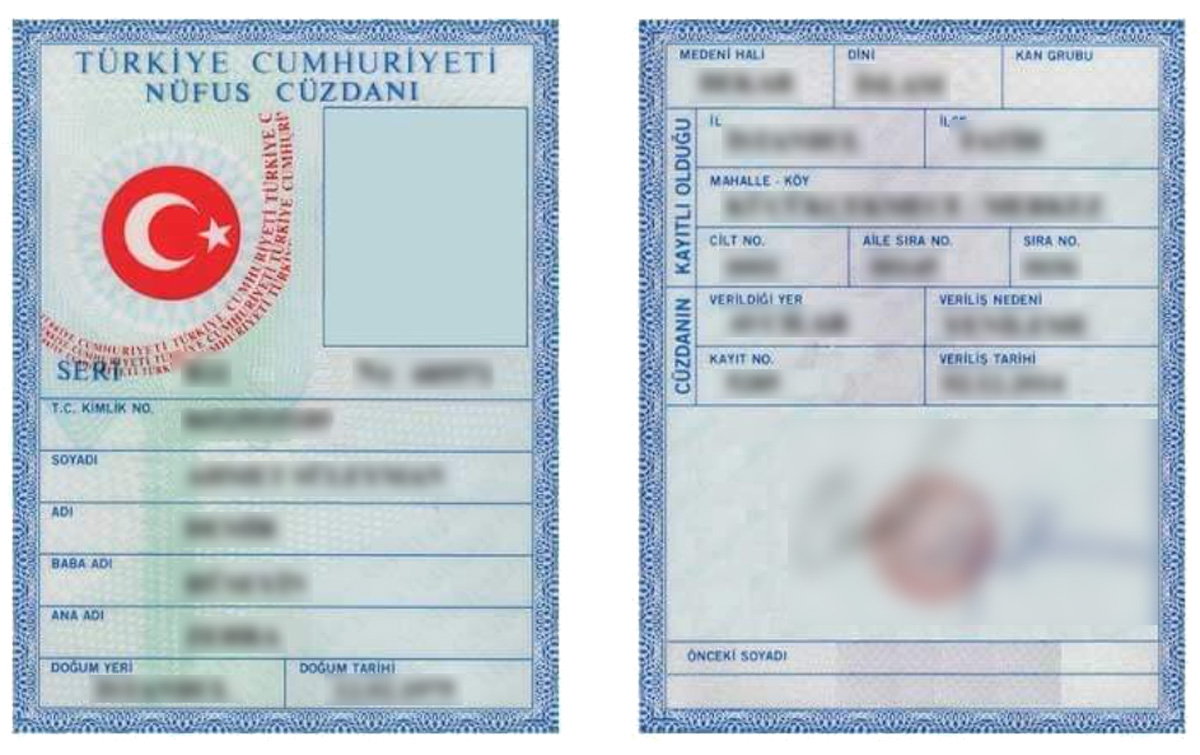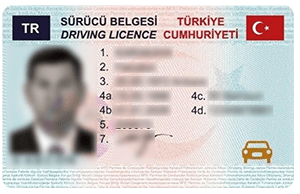Data
Classification
Why is Data ClassificationNecessary?
DATA CLASSIFICATION
It is the organization of the categorization, sorting, and storage functions necessary for us to access the document we need.
A well-planned data classification is extremely important in risk management, legal compliance, and to form the life cycle of the document.
Investigation - Where is Personal Data?
Ayse Çelik, 35
Financial Specialist
Head Office (HQ)
Personal Information
Activity
Goals
Challenges
- Teamwork
- Time Management
- Communication
Motivation
ATTACHED DOCUMENTS
- CV
- ID
- Passport
- Certificate of Employment
Hobbies and Activities
Why is Data Classification Necessary?
Although the main purpose of data classification is to access the correct data quickly with the appropriate authorization,
the categorization of the document containing personal data has become obligatory due to the need for legal compliance.
Security
Protection of documents and records against cyber-attacks and breaches.
Privacy
Ensuring access control of the document or record with the appropriate authorization matrix.
Accessibility
Availablity of documents and records when requested.
Integrity
Keeping the required recordset and documents in similar environments in terms of relevance and integrity.
Accessibility
Availablity of documents and records when requested.
Integrity
Keeping the required recordset and documents in similar environments in terms of relevance and integrity.
Security
Protection of documents and records against cyber-attacks and breaches.
Privacy
Ensuring access control of the document or record with the appropriate authorization matrix.
Classification in Two Types
Classification Based on the Retention Periods
Personal data must be categorized and classified according to each process owned by all departments to determine the destruction periods. These categories should be determined by considering the retention periods and the processes to which they are related. The determination of retention periods is carried out by considering the legal obligation and legitimate interest of the organization.
| Classification | Department/Process | Duration |
|---|---|---|
| Records kept according to the law numbered 5651 | IT | 2 years (legal obligation) |
| Employee Resumes (Resumes of employee candidates who were not accepted for the job) | Human Resources | 3 years (maximum) |
| Employee Active Directory Records | Human Resources/Quality | 10 years |
Classification Based on Sensitivity
In order to determine the storage conditions of personal data, the data kept in all departments must have a sensitivity label for each process. For example, sensitive personal data should be stored with the Top Secret Information tag and the storage conditions specified in the law should be met.
Privacy Levels
Çok Gizli Bilgi (Top Secret) \Sağlık VerisiKişisel Veri
ConfidentialHighly ConfidentialInformation!
GizliÇok GizliBilgi içermektedir.
TOP SECRETCONFIDENTIALFOR YOUR EYES ONLY
Questions to be Answered
Human Resources and Data
In order to ensure data privacy and security, it is one of the important roles of Human Resources to contribute to the data classification and demonstrate correct methodological approaches the data retention as required by law.
Human Resources department must make sure that legal compliance is ensured when setting document standards in accordance with organizational processes and rules to manage information security risks. The fact that the processed records and files do not have predetermined levels of sensitivity and confidentiality means that the data are not adequately protected in administrative and technical terms.
Examples of Personal Data Obtained
in Human Resources Processes

Which Documents Should Be Stored in Personnel Files and
How Should They Be Stored?
Necessary security measures should be taken regarding the entry to and exit from physical environments containing personal data, and the security of personal information should be ensured.
Necessary security measures should be taken regarding the entry to and exit from of physical environments containing personal data, and the security of personal information should be ensured.
The form filled in by the employee for MSA information should be taken as basis. In addition, the identity documents of the spouse and child should not be requested.
The form filled in by the employee for MSA information should be taken as basis. In addition, the identity documents of the spouse and child should not be requested.
Documents containing health data should be kept in lockers in the workplace doctor's office, not in the personnel file.
Documents containing health data should be kept in lockers in the workplace doctor's office, not in the personnel file.
A criminal record should be required only as long as the position to work requires ("purpose limitation").
A criminal record should be required only as long as the position to work requires ("purpose limitation").
The information kept in personnel files and employee registration cards in digital environments must be accurate and up to date.
The information kept in personnel files and employee registration cards in digital environments must be accurate and up to date.
Driving license should only be requested from people who will use vehicles for organizational procedures.
Driving license should only be requested from people who will use vehicles for organizational procedures.
Personnel files should be kept in accordance with their retention periods, and those whose storage periods have expired should be destructed.
Personnel files should be kept in accordance with their retention periods, and those whose storage periods have expired should be destructed.
For documents such as birth report, death certificate, and marriage certificate required for excuse leaves, the principle of proportionality should be considered, and excess data should not be taken.
For documents such as birth report, death certificate, and marriage certificate required for excuse leaves, the principle of proportionality should be considered, and excess data should not be taken.
Which Documents Should Be Stored in Personnel Files and How Should They Be Stored?


Exemplary Retention Periods
in Human Resources Processes
Job Application Records
with Positive Results
Job Application Records
with Negative Results
Personnel File and
Records of HR Processes
Employee Insurance
Policies
Occupational Health and
Safety Records
Training Records
Employee’s Law and
Enforcement Requests
How Do We Destruct Data in Human Resources?
Retention periods for personal data should be determined, and periods suitable for the nature of the work should be specified according to the type of data within the framework stipulated by the law.
When determining destruction periods, not only data types but also data subjects should be considered. For example, the data in the identity category obtained from the Employee Candidates and the identity data obtained from the employees should be subject to different retention periods.
Information that does not need to be kept in documents and is safe to keep in the current state should be masked with scribbling method. For example, religion, blood group information, etc. available in old version of IDs.
Information and documents in physical environments should be destructed by appropriate methods by following the relevant retention periods. At least P-5 level paper shredders should be used.
Information and documents in digital environments should be destructed with appropriate methods by following the relevant retention periods. Unnecessary data should not be entered into online registration systems used in this regard. Unnecessary data entered previously can be destructed by anonymization.
All transactions related to destruction should be recorded and such records should be kept for at least three years, excluding other legal obligations.
Conditions Requiring the Destruction of Data
Amendment or abolition of the relevant legislation provisions that constitute the basis for personal data processing,
The disappearance of the purpose requiring the processing or storage of personal data,
Withdrawal of the explicit consent by the data subject in cases where the processing of personal data takes place only on the condition of explicit consent,
Expiration of the maximum period for the storage of personal data and unavailability of conditions to justify the storage of personal data for a longer period.
Legal Compliance
In accordance with Article 12 of the Personal Data Protection Law No.6698 (KVKK), the data controller shall take all necessary technical and organizational measures for providing an appropriate level of security in order to “prevent unlawful processing of personal data, prevent unlawful access to personal data, and safeguard personal data.” Based on this provision, taking appropriate administrative and technical measures depends on the correct classification of personal data and risk analysis in line with these classifications.
This obligation has been summarized in the data security guide of the Authority as below.
Identification of Current Risks and Threats
In order to ensure the security of personal data, firstly, it should be determined what personal data are processed by the data controller, the possible risks that may arise in relation to the protection of these data; and the results in case of occurrence of these risks should be accurately determined and appropriate measures should be taken in this regard.
On the other hand, within the scope of Article 32 of the EU General Data Protection Regulation (GDPR), the security of data processing is explained as follows:
Taking into account the state of the art, the costs of implementation and the nature, scope, context, and purposes of processing, as well as the risk of varying likelihood and severity for the rights and freedoms of natural persons, the controller, and the processor, shall implement appropriate technical and organizational measures to ensure a level of security appropriate to the risk, including inter alia as appropriate.
Finally, the following article in the Turkish Criminal Code No. 5237 is very important, in case of the failure to preserve and destruct data:
Destruction of Data
ARTICLE 138 - (1) Any person who fails to destruct data in accordance with the prescribed procedures, before the expiry of the legally prescribed period for destruction, shall be sentenced to a penalty of imprisonment for a term of one to two years.
Notification!

